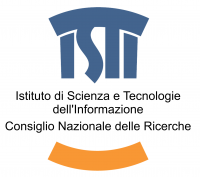Mercedes Farjas
Archaeology has been forcefully integrated to the digital world through multiple digital data capture and management mediums that have been implemented during the last two decades. For Spatial Archaeology this revolution has signaled the employment of geomatic resources in the capture and storage of geo-data, management, analysis and visualization of spatial and temporal variability at different scales. The volume of information generated thus relies on the slowly growing number of open access repositories set up by research centers and, in many cases, encouraged by legislation or national subsidies. This varied technological panorama leads to a valid concern on behalf by the archaeologists in that research now involves much more than the materiality of what they are studying. Nowadays any archaeological research must not only use a minimum technology but also foresee, post-analysis, its management within research institutions as well as in heritage contexts. The use of geomatic resources has also led to ontological and empirical revisions in the analysis of spatial variability.
This symposia aims to create a space for sharing the varied theoretical approaches and applications of geomatic resources in traditional research, in data management of e-repositories and in heritage management. It is also a call to reflect on the ongoing experience in the relationship between those in charge of basic archaeological research with institutions in charge of heritage management. We are especially interested in establishing this dialogue for attracting contributions from all Latin America thereby encouraging discussion and comparisons of proposals and experiences, and promote an intercontinental conversation.
The themes contemplated for this colloquium are:
- Case studies showcasing the resources applied to perception of archaeological spatial variability and representation with geo-computational environments: Capture methods (Total Station, LIDAR, photograms, remote sensors, ETM, etc.), data base management (GeodataBase, GIS, etc.), analytical series, and public usage for different types of users.
- New synergy between archaeological practice and geo-computational media, such as: Gigapixel, temporal visualization and interpretation of spatial problems, Geostatistics and intra-site continuous data,…
- Implementing online data bases, issues on accessibility and consultation of e-repositories, minimum recoding standards, and other ways in which these new venues impact on field methods and how professionals should prepare and record material for later use/access by other member of the public.


